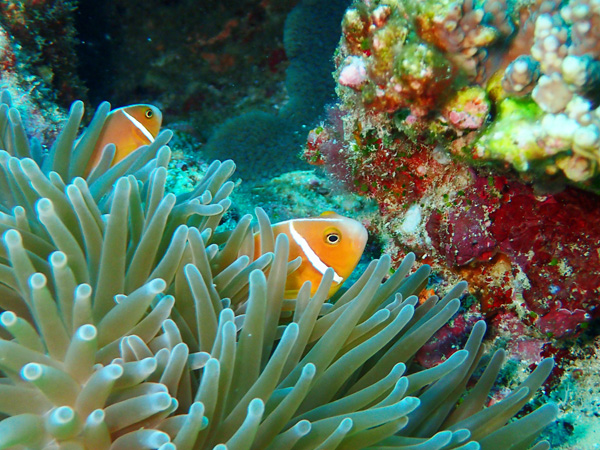Sustainable land management has flow on effects
The health and resilience of the Great Barrier Reef is a shared responsibility between all levels of government, agricultural and other industries, and the wider community.
Although climate variability is the biggest threat to the health and resilience of the Great Barrier Reef, farmers in Reef catchments are doing their part to help the Reef by improving the quality of water entering the Reef’s lagoon.
The recent coral bleaching events in 2016 and early 2017 were attributed to unusually warm ocean temperatures caused by unfavourable ocean currents and still, calm atmospheric conditions occurring over an extended period of time. These unusual conditions made it hard for some corals to survive, particularly in the Reef’s northern third. Such bleaching highlights the importance of global action on climate variability.

Changes in farming practices are contributing to the longevity and productive base of farming, as well as The Great Barrier
Reef’s future health.
Another stress on the Reef’s health is the runoff from agricultural practices in the Reef catchments. Large amounts of nutrients from fertilisers and sediments contribute to the poor quality of water leaving farms—water that ultimately reaches the Reef lagoon. Now, farmers are incorporating sustainable production farming methods into their business models in an effort to improve both the productive base of their land and the quality of water entering waterways. This work is supported by the Australian and Queensland governments’ Reef 2050 Plan.
Cane farmers are being recognised for participating in industry-led best management practice accreditation systems, and from this, improving their farming practices. Farmers have demonstrated that sugarcane yields can be maintained or even increased through improved irrigation methods that use less fertiliser and water, with a resulting benefit for waterways. Some farmers are extending the amount of vegetation along rivers and creeks, providing a buffer to catch nutrients and sediments before they reach waterways.
Graziers too are participating in their own accreditation systems that focus on soil health and grazing land management, including paddock rotation. The aim is to improve long term profitability while reducing sediment and nutrient loss into local rivers and creeks. The new practices improve ground cover throughout the year, ensuring livestock are kept in good condition and the soils are held in place. Waterways are being protected from livestock by fencing them off and using watering points throughout the paddocks.
Our farmers are demonstrating innovation in applying cutting edge technology and techniques to manage land responsibly, while continuing to supply global and domestic markets. Changes in farming practices are contributing to the longevity and productive base of farming, as well as the Great Barrier Reef’s future health.
For more information visit www.environment.gov.au/marine/gbr/long-term-sustainability-plan



